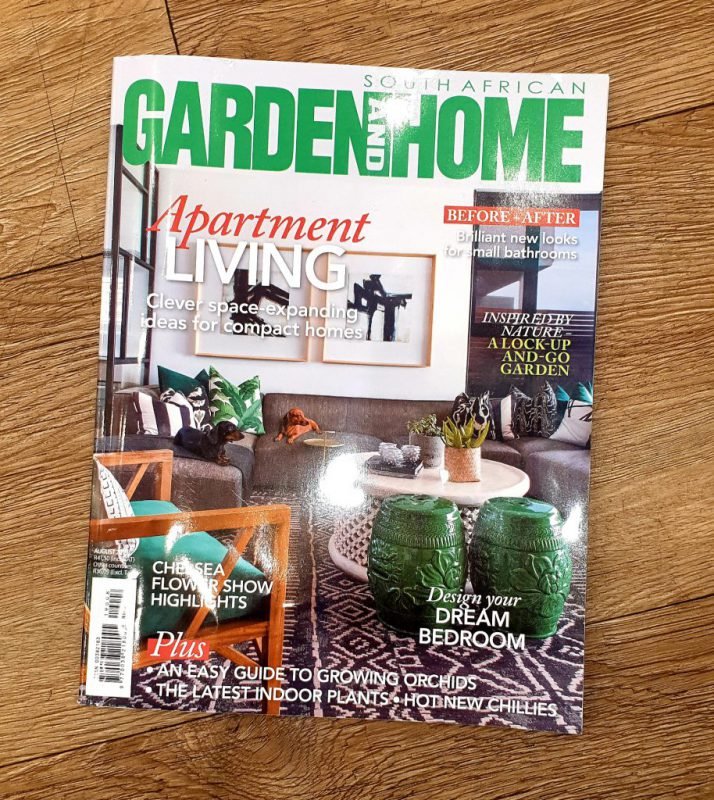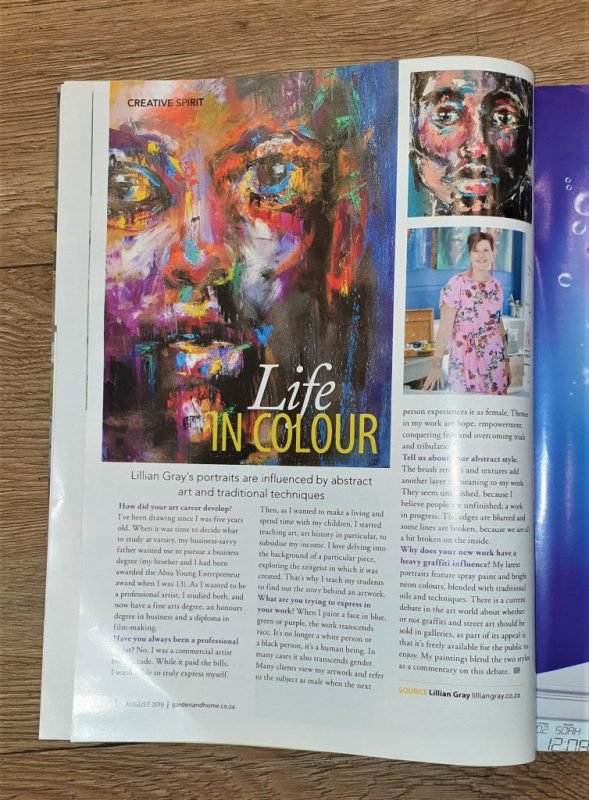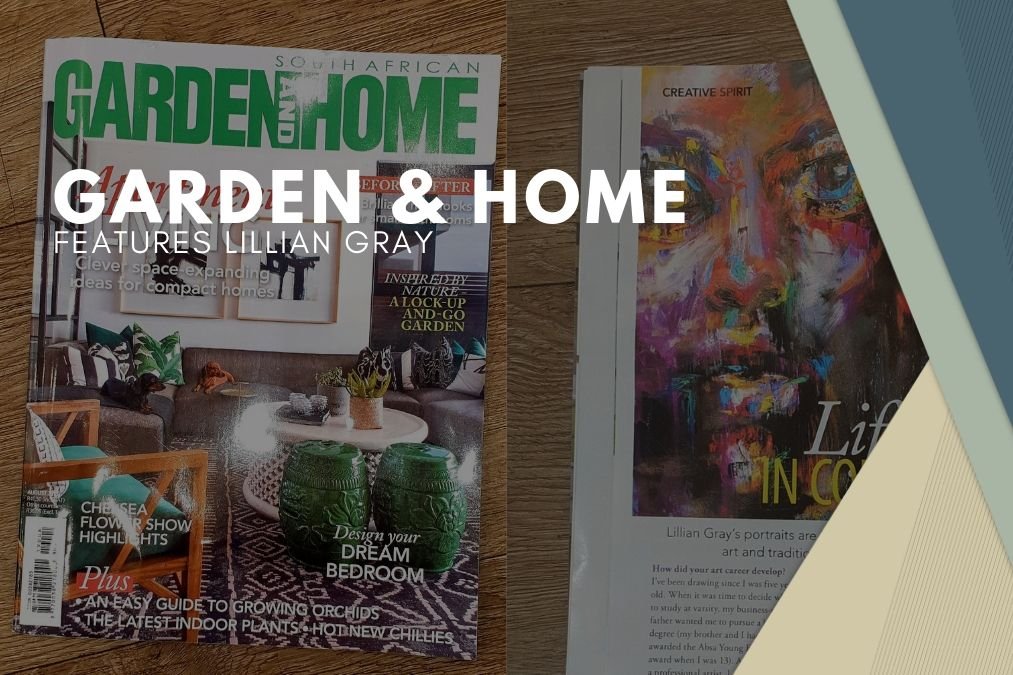No products in the basket.
In the News
Lillian Gray, Astounding South African Artist: Life in Colour
Lillian Gray’s portraits are influenced by abstract art and traditional techniques
First Published in the Garden&Home Aug Edition 2019
How did your art career develop?
I’ve been drawing since I was five years old. When it was time to decide what to study at varsity, my business savvy father wanted me to pursue a business degree (my brother and I had been awarded the Absa Young Entrepreneur award when I was 13) As I wanted to be a professional artist, I studied both, and now have a fine arts degree, an honours degree in business and a diploma in film-making.
Have you always been a professional artist?
No, I was a commercial artist for a decade. While it paid the bills, I was unable to truly express myself. Then as I wanted to make a living and spend time with my children, I started teaching art, art history in particular, to subsidise my income. I love delving into the background of particular pieces, exploring the zeitgeist in which it was created. That’s why I teach my students to find out the story behind an artwork.
What are you trying to express in your work?
When I paint a face in blue, green or purple, the work transcends race. It’s no longer a white person or a black person, it’s a human being. In many cases it also transcends gender. Many clients view my artwork and refer to the subject as male when the next person experiences it as female. Themes in my work are hope, empowerment, conquering fear and overcoming trials and tribulations.
Tell us about your abstract style.
The brush strokes and textures add another meaning to my work. They seem unfinished because I believe people are unfinished, a work in progress. The edges are blurred and some lines are broken because we are all a bit broken on the inside.
Why does your new work have a heavy graffiti influence?
My latest portraits feature spray paint and bright neon colours, blended with traditional oils and techniques. There is a current debate in the art world about whether or not graffiti and street art should be sold in galleries, as part of its appeal is that it’s freely available for the public to enjoy. My paintings blend the two styles as a commentary on the debate.


Keep an eye out for the next article on Lillian Gray: Lillian Gray’s art passion


Pingback: Lillian Gray, Authentic South African Artist features in Sunday Times – Going against the grain - Lillian Gray - Art School